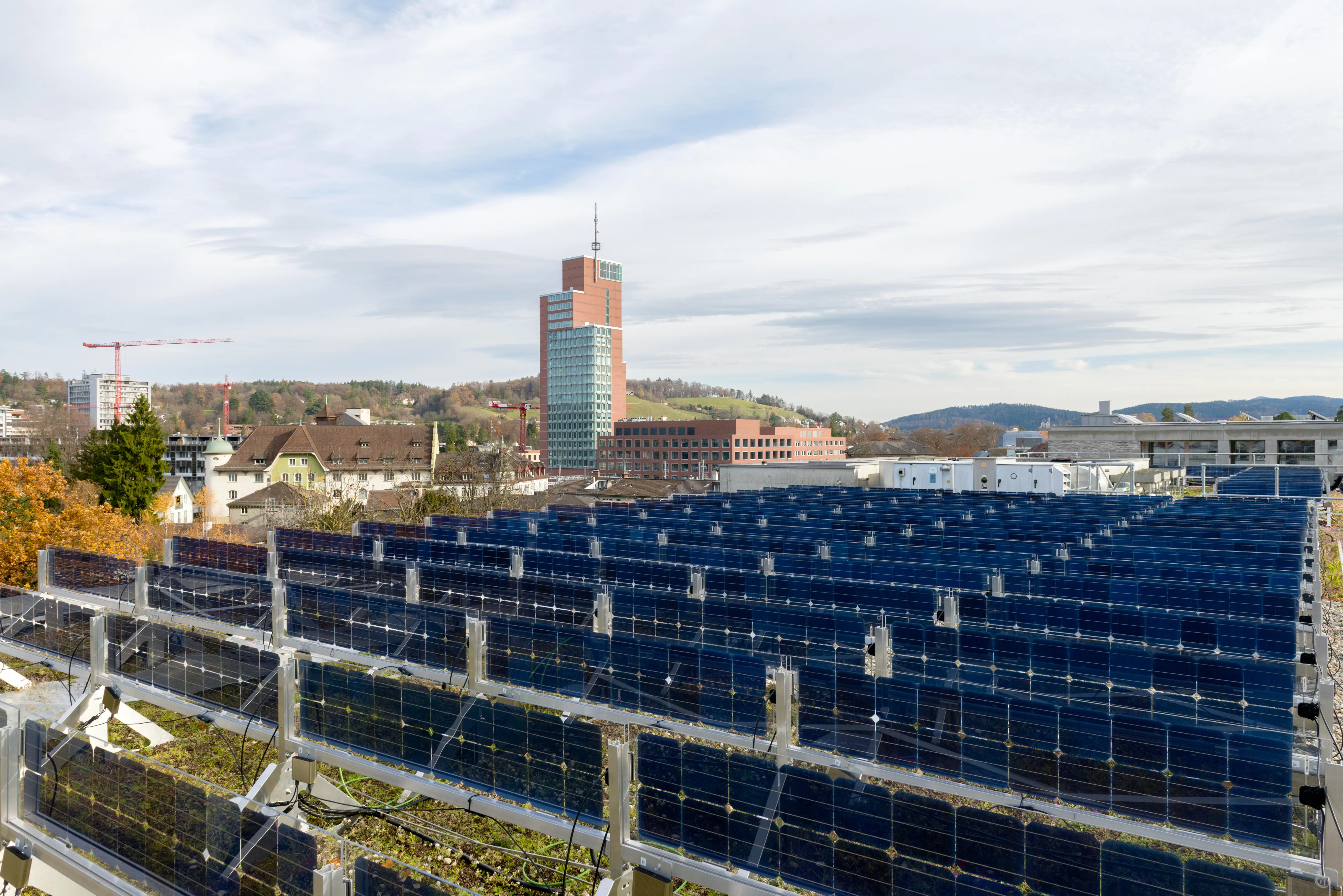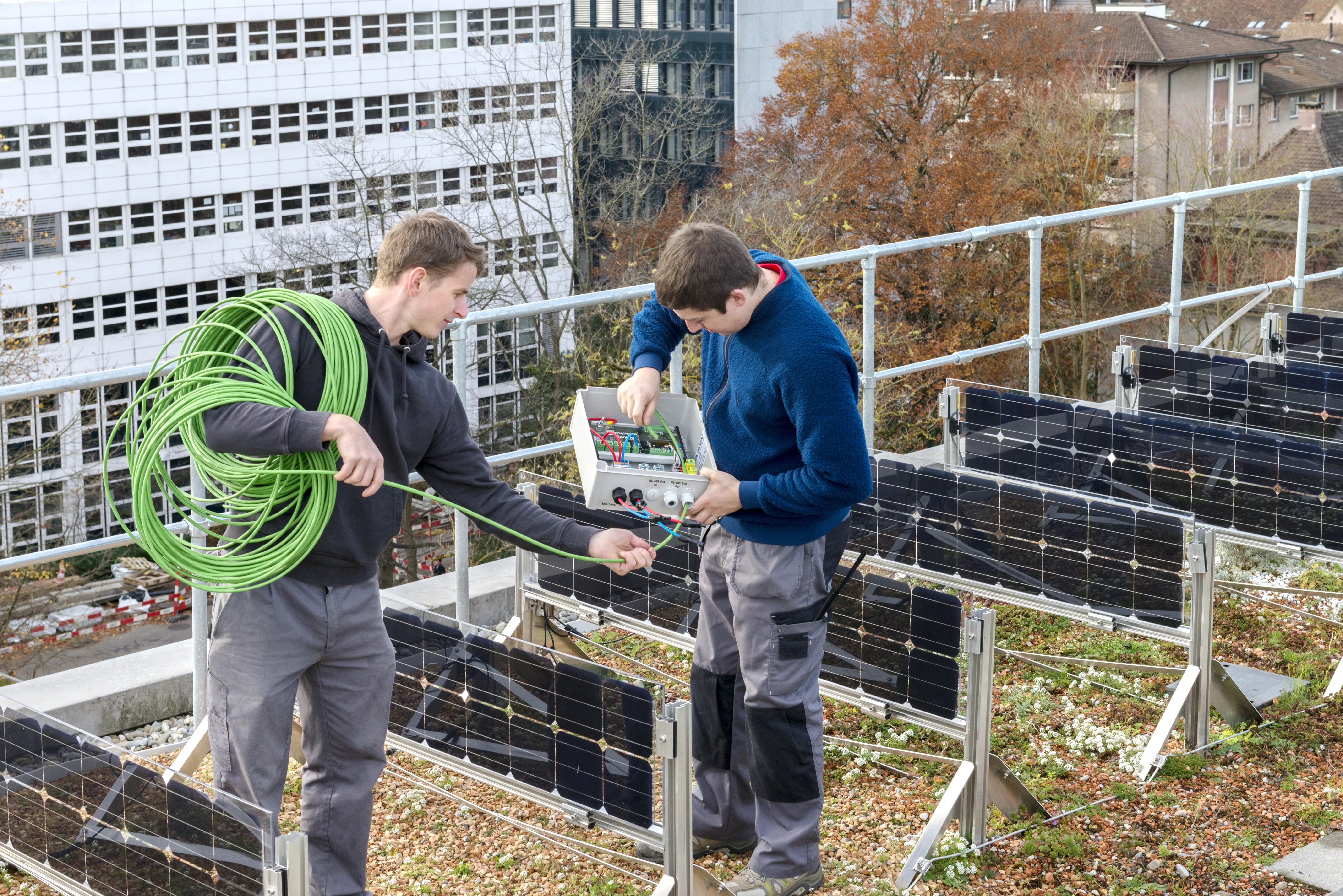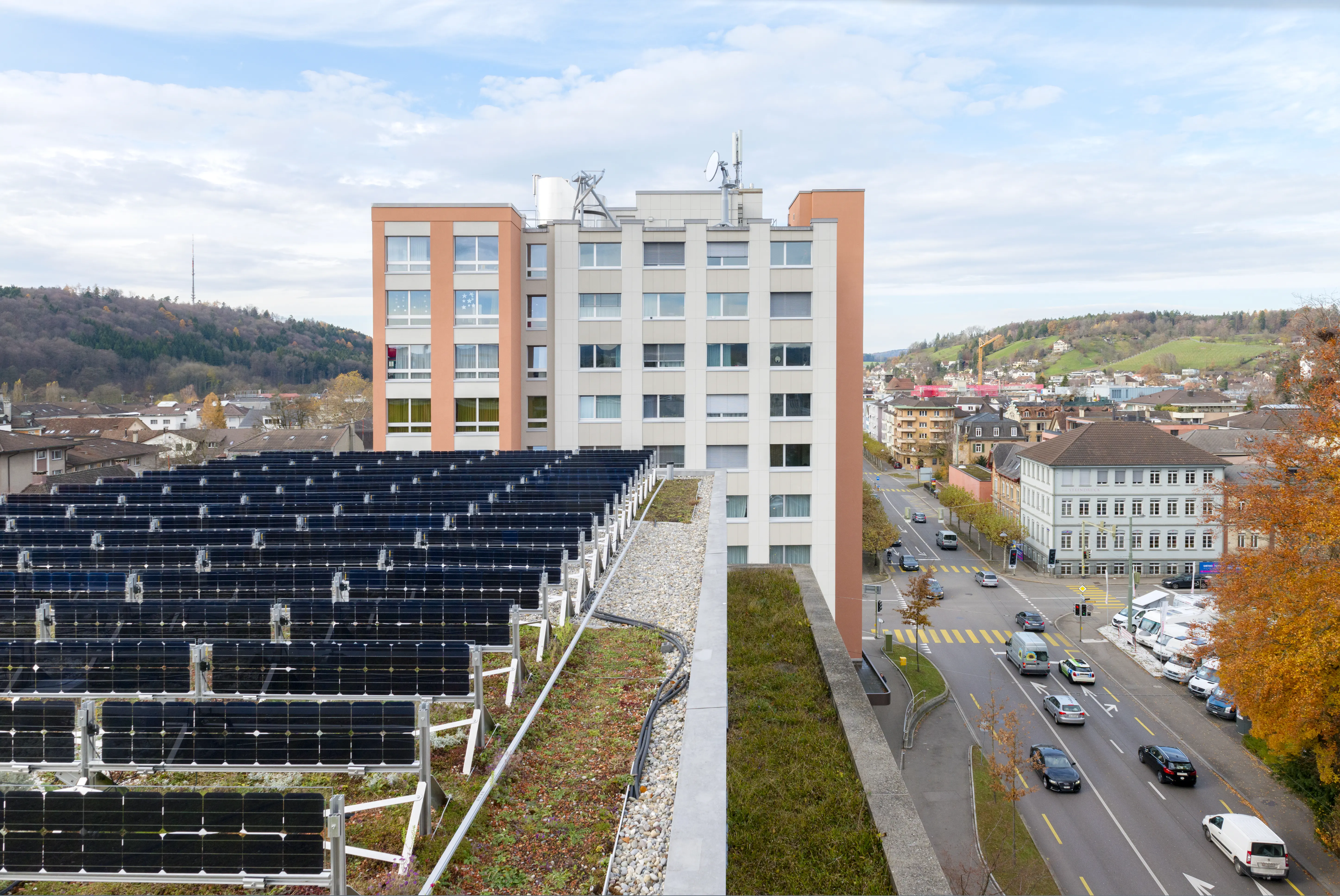Vertical solar panels for balanced electricity production
Solar panels produce most of their electricity around midday, when there is already a lot of power in the grid. To solve this problem, ZHAW researchers are testing vertical solar panels for the first time. These produce electricity with morning and evening sunlight, making temporary storage with expensive batteries unnecessary.
Traditional photovoltaic systems produce most of their electricity over midday, when the sun is at its highest point. Performance rises continually in the morning, but falls in the course of the afternoon. The Solarspar Association and the ZHAW School of Engineering are working on a pioneer project that aims to reverse this output curve and create a balance in the production of electricity.
"Homes use most energy between 5 and 7 o'clock in the evening, when people arrive home from work and cook," says Franz Baumgartner of the ZHAW Institute for Energy Systems and Fluid Engineering. “To cover this need with the electricity produced over midday, expensive batteries are used to store electricity temporarily."
Better distribution instead of battery storage
A new concept developed by researchers at the ZHAW may be the solution to solar energy without the need for temporary battery storage. In a pilot test, Franz Baumgartner and his team have built a unique solar panel system on the flat roof of the Eichgut retirement home in Winterthur. The double-sided solar panels have been placed upright rather than at an angle, with their sides facing east and west.
"The output curve for this system looks like a two-humped camel," says Baumgartner. "In the summer months, the first peak is reached at 8 o'clock in the morning, the second around 6 o'clock in the evening."
Unlike with traditional solar energy systems that reach their peak when the sun is at its highest point, performance drops over midday.
A whole year spent measuring
The idea may seem simple, but it has failed in the past, due to technical challenges and manufacturing costs. "The cost of manufacturing solar panels has been sinking constantly in recent years," says Franz Baumgartner. "And the manufacturing of thin, double-sided modules, like the ones we needed for this project, has only been possible for a few years."
ZHAW engineer Thomas Baumann scientifically analysed this double-sided module technology as part of his master’s degree at the ZHAW. The field test on the roof of the Eichgut will determine whether this technology works as well as it promises.
"Initial results last summer were promising," says Thomas Baumann. "They were even above the projected values we had from simulations."
A newly installed monitoring system will allow the researchers to measure precisely the system's yield for an entire calendar year, starting in March.
Fewer risks, more greenery
The concept has other advantages, as well as better electricity distribution. The vertical positioning of the panels means that they need less maintenance, which lowers costs. Electricity production will also not be hindered by snow, the risk of damage by hail is low and, finally, the roof provides space for plants. The latter improves air quality, lowers the temperature in the rooms below in summer and could even have a positive impact on electricity production.
"We are also researching whether placing light-coloured plants on the roof could reflect the sunrays enough to have a positive impact on the amount of electricity produced," says Thomas Baumann.
The project is receiving financial support from Stadtwerk Winterthur’s climate fund.
Contact
Thomas Baumann, Institut für Energiesysteme und Fluid-Engineering, ZHAW School of Engineering, Tel. 058 934 71 87, E-Mail thomas.baumann@zhaw.ch
Julia Obst, Public Relations, ZHAW School of Engineering, Tel. 058 934 75 13, E-Mail medien.engineering@zhaw.ch




